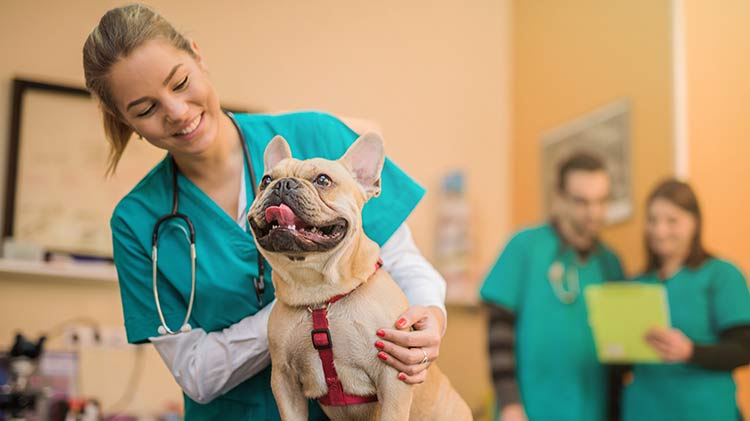A portion of your pet’s anticipated and unanticipated veterinary bills are covered by pet insurance. A good pet insurance policy will cover illnesses, accidents, and yearly exams. Selecting a pet insurance provider is straightforward, but it entails a lot of terminology.
To assist you in comprehending the terminology and workings of pet insurance, the Guides Home Team has put together this comprehensive reference.
Pet insurance: what is it?
Pet insurance covers veterinary bills related to illnesses and accidents. Any or all of your pet’s veterinary bills are covered by pet insurance.
Accidents and illnesses are covered by standard pet insurance, but basic medical treatments are also covered. Pet insurance frees you from the financial strain of caring for your animal companion, allowing you to focus on their health and welfare.
How Do Policies for Pet Insurance Operate?
In contrast to human health insurance, most pet insurance plans pay back the veterinary expenses you submit to your insurer via mail, email, mobile app, or online portal. When the claim is processed, the reimbursement percentage under your plan is applied to the charge.
Some companies provide direct pay as an option for reimbursement; in this case, you pay a copay, and your pet insurance company covers the remaining costs. Although this policy is more cost-effective, it is more convenient and exclusive to participating veterinary clinics.
A health record signed by a veterinarian and a wellness check is typically required before enrolling in pet insurance. Before providing coverage, insurance companies demand a waiting time. Due to waiting periods, pet owners cannot get plans that cover known conditions.
Tailoring Pet Insurance Protection
Buyers of pet insurance will come across these terms. Look at these factors to locate insurance that suits your needs and budget.
Allowances for Deductions
You have to pay a deductible before your insurance company covers the cost of your pet’s care. Businesses that charge a per-event deductible need you to pay it each time. Certain firms have one-time annual deductibles that you have to pay.
Deductibles range from $0 to $1,000 per incident or year.
Rates of compensation
Selecting a reimbursement rate is an option when purchasing insurance. After your deductible, your provider will pay back the percentage of covered expenses. A lower reimbursement rate results in a bigger bill but a reduced monthly premium.
Usually, insurance companies cover 70%, 80%, or 90% of the cost of care.
Annual Caps
An annual limit is the maximum reimbursement that is allowed each year. It would help if you covered any further costs beyond this point. The majority of insurance providers have an annual cap of $2,500. For certain firms, unlimited annual limitations mean you’ll never have to spend cash. Both your copay and deductible are due.
What does pet insurance cover and not cover?
Different pet insurance plans include additional coverage. The least expensive insurance are accident-only ones, but they only cover conditions or injuries that happen by accident, such as: – Accidental injuries, including ACL ruptures and fractured bones – Prolonged ailments such as skin disorders and allergies – Common ailments like kennel cough and infections – Genetic conditions such as hip dysplasia – Hospitalization treatments such as surgery and veterinary care – Diagnostic procedures such as blood testing and X-rays – Serious diseases including diabetes and cancer.
The primary exclusions from insurance are preexisting conditions. Your pet gets diagnosed with these ailments or injuries before the commencement of your plan. Some treatable chronic diseases may be covered after a predetermined amount of time without symptoms.
Breeding or pregnancy-related procedures, cosmetic surgeries like dewclaw removal and tail docking, dietary supplements, and experimental treatments not approved by the veterinary medical board in your state may all be excluded from insurance.
Your monthly insurance payment is called a premium. Preexisting medical issues and elderly pets incur higher premiums than young, healthy pets. Your reimbursement rate and deductible may also have an impact on your premium. Like health insurance, monthly rates are lowered by a higher deductible and increased by a lower deductible.
According to NAPA, a dog’s monthly premium for insurance in the US is $46, and a cat’s is $26. Costs for pet insurance differ according to plan and provider.
How much does pet insurance cost?
The following other factors influence pet insurance prices in addition to the reimbursement rate, coverage limit, and deductible:
• Age: Both the risk of illness or injury to pets and the cost of care increase with age. Early insurance enrollment can result in a cheaper premium. It costs more to get new coverage for an elderly pet.
The breed of your dog or cat may affect your monthly premium, particularly if they are prone to certain ailments. Because of hip dysplasia, German shepherds are more likely to be covered by insurance.
• Customization: To modify monthly rates and change the deductible, reimbursement rate, and annual coverage cap. When personalizing your pet’s plan, make thoughtful selections. A high payment and reimbursement proportion plan raises monthly expenses. Premiums are reduced by a large deductible and a low reimbursement rate, but out-of-pocket medical expenses rise.
• Discounts: A lot of pet’s insurance companies provide savings. Embrace, Spot, and the ASPCA give 10% off multiple pet policies. Fetch offers discounts to AARP, veterans, active military personnel, and pet owners who have rescued animals from shelters.
When determining insurance premiums, consider the cost of local veterinary care. The rates are higher in metropolitan regions like Los Angeles and New York than in smaller towns.
Is Insurance Necessary for My Pet?
Pet insurance safeguards your pet and your wallet in a sickness or emergency.
“When it’s life or death, the last thing we want to do is think about money and wonder if we have saved enough to save our beloved pet,” states dog trainer Megan Mars, owner of K9ofmine.com. “Pet’s insurance prevents that tough decision.”
Think about uninsured pet vet bills that you must pay out of pocket. According to Healthy Paws, the cost of veterinary care for the most common pet’s diseases is higher than the average yearly insurance coverage.
Infections of the urinary system, which can lead to renal issues, cost $9,115 for dogs and $12,587 for cats. For dogs, insurance typically costs $360–$600 per year, whereas for cats, it costs $180–$360.
The Ideal Time to Purchase Pet Insurance?
Our pet specialists advise getting pet insurance immediately without waiting for your new pet. This is particularly true for genetically sensitive pet breeds.
Dr. Shannon Barrett, a veterinarian, advises clients to obtain insurance if they have a new pet’s entering the home. “It is the most important owner investment.”
Age-related rate increases are inevitable for pets whose insurance is obtained at a lower age. As pets get older, Trupanion guarantees not to raise prices.










